Thousands of people in cities and towns throughout New Zealand have attended Anzac Day services to honour all those who served and died in war. April 25 also commemorates the 99th anniversary of the start of the Gallipoli campaign.
Members of Wellington 57 company dressed in 1914 New Zealand infantry uniforms led the Dawn March of returned servicemen and women in the capital on Anzac Day. The thinning ranks of war veterans were again bolstered this year by relatives wearing their medals.
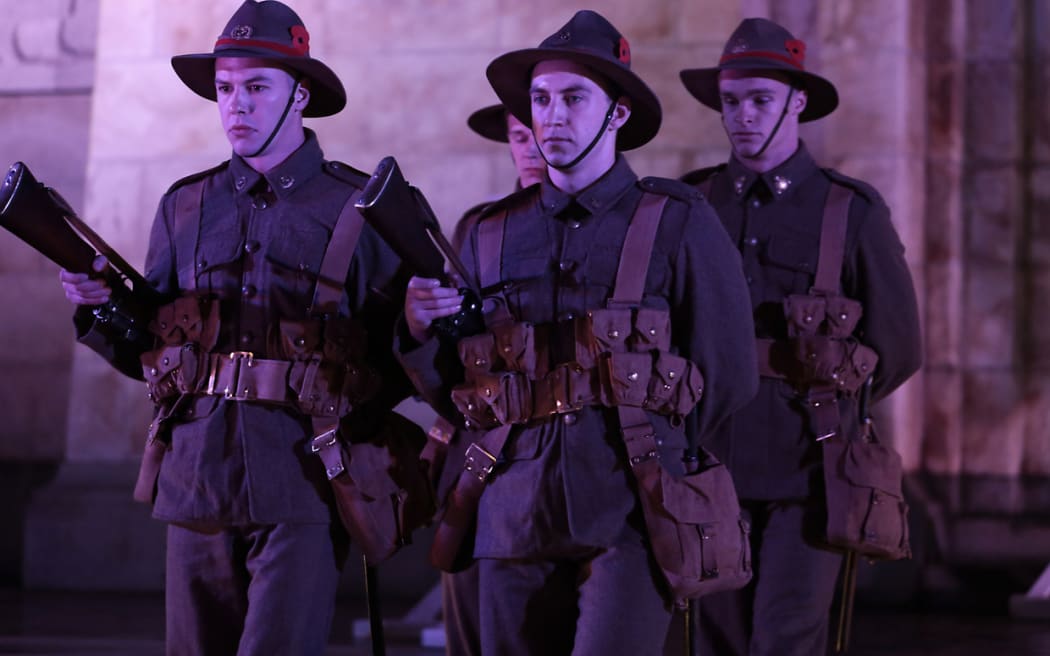
Troops in World War I uniforms marching on the Cenotaph in Wellington. Photo: RNZ / Diego Opatowski
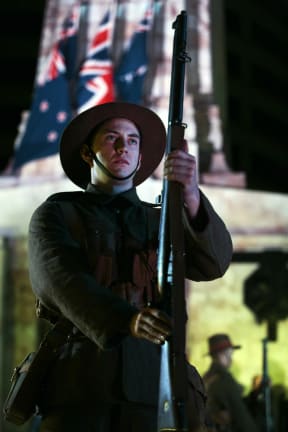
A soldier on the Cenotaph in Wellington. Photo: RNZ / Diego Opatowski
Platoon members carried Long Tom and Lee Enfield Rifles used by the New Zealand Expeditionary Force at the start of World War I. They wore the uniform and insignia of each of the 16 Infantry Companies and the 12 Mounted Rifles Squadrons that sailed from New Zealand on 16 October 1914.
The Maori Contingent, the New Zealand Signals Corps, Engineering Corps and Army Nursing Service were also represented on Friday.
Soldiers and nurses wearing replica authentic uniforms was the brainchild of film director Sir Peter Jackson, who said he wanted to catch the imagination of young people during the centenary of New Zealand's entry to the Great War.
Sir Peter paid for the uniforms which are totally authentic - right through to the soldiers' T-shirt style undershirts which were never seen by the public. He said each soldier represented one unit that went overseas in the first embarkation.
Thousands were at the Cenotaph on Lambton Quay in Wellington, including many children.
The Chief of the Defence Force, Lieutenant-General Tim Keating, believes the growing popularity of Anzac Day is matched by a growing sense of nationhood.
"New Zealanders are starting to understand this is a point of difference for New Zealand, as it is across the ditch with our cousins in Australia. It's something that we can all sort of commemorate, perhaps the founding of New Zealand. Something special occurred - born out of tragedy, though, born out of the tragedy and the folly that is war."
Lieutenant-General Keating said Anzac Day ceremonies do not glorify war - rather, they remind New Zealanders of this country's history of going to the aid of others in trouble, and of the men and women who lost their lives doing that.
Sir Richard Bolt, a World War II bomber pilot and former chief of the Defence Force, has been attending dawn services for as long as he can remember. The 90-year-old says Anzac Day will never lose its mana.
A vigil at the Tomb of the Unknown Warrior in the capital began at dawn, with a catafalque guard of four armed soldiers from defence, the army and navy. Each soldier is guarding a corner of the tomb at the National War Memorial on Buckle Street. Rotating shifts will maintain the vigil until dusk.
Turkish govt pays tribute
The Turkish government paid tribute to those killed in the Gallipoli campaign. A crowd of about 200 people, including members of the Turkish community, gathered at the Atatürk Memorial in Wellington on Friday afternoon.
Melih Karalar, the counsellor for the Republic of Turkey's embassy in New Zealand, read the words of the founder of modern Turkey, Mustafa Kemal Atatürk, which are engraved on the memorial.
"You, the mothers who sent their sons from far away countries, wipe away your tears. Your sons are now lying in our bosom and are in peace. After having lost their lives on this land, they have become our sons as well."
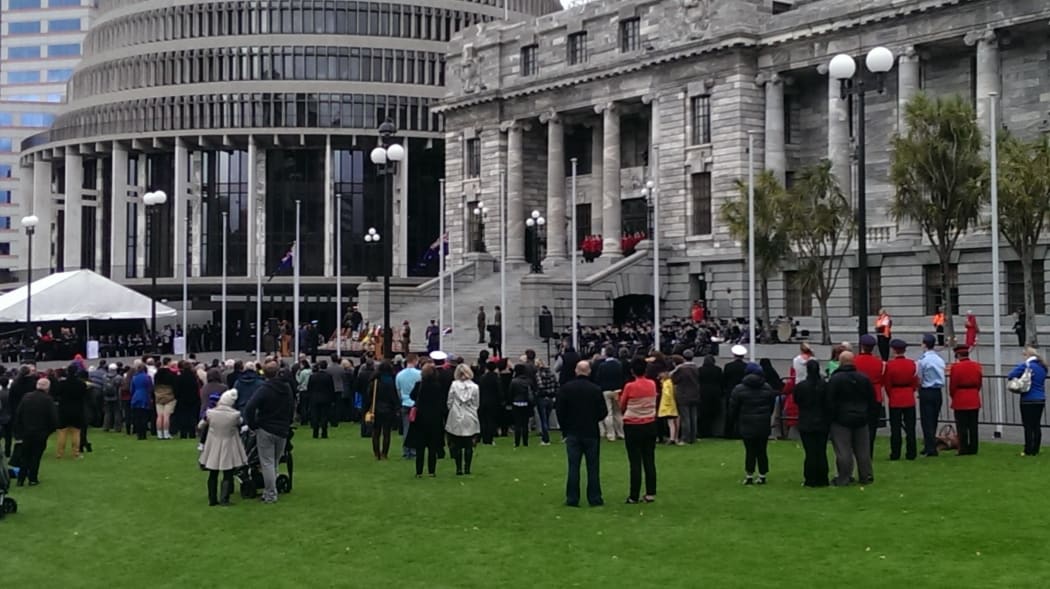
A service was also held at Parliament. Photo: RNZ / Ceinwyn Curtis
Wellington and Auckland ceremonies
Several hundred people gathered on the forecourt at Parliament for a national commemorative service and wreath-laying ceremony later on Friday morning. Chief Justice Dame Sian Elias, Prime Minister John Key and representatives of veterans' organisations and the diplomatic corps laid wreaths.
Dame Sian told those gathered no one in New Zealand anticipated the scale of the war that was to come. She said Parliament's location is fitting, as it was there almost a century ago that the then Governor-General Lord Liverpool announced that Great Britain, and therefore New Zealand, was at war.
Dame Sian said in the week that followed, 14,000 men motivated by a sense of duty and a desire for adventure volunteered in 1914 to fight, not realising the level of sacrifice that lay ahead. By the end of the battle of Gallipoli the following year, one in five of the New Zealanders who fought at what is now known as Anzac Cove had been killed or injured.
In Auckland, mayor Len Brown and Labour Party leader David Cunliffe were among those at a service on the cenotaph in front of the Auckland War Memorial Museum. Families began arriving at the Domain from about 5.30am to the City of Auckland pipe band playing on the Court of Honour.
International representatives paid tribute at the civic service. The Honorary Consul from Belgium, Lisbeth Jacobs, said it is important to Belgium that New Zealand's sacrifices in World War I are recognised.
"They left everything behind to come and fight for us, to liberate us. I really, really feel very strongly about it and we have a great gratitude for everything that these boys did."
The Consulate-General of Japan, Kazutoshi Inadome, said the service is a good time "to remember the past and remember the victims in the war."
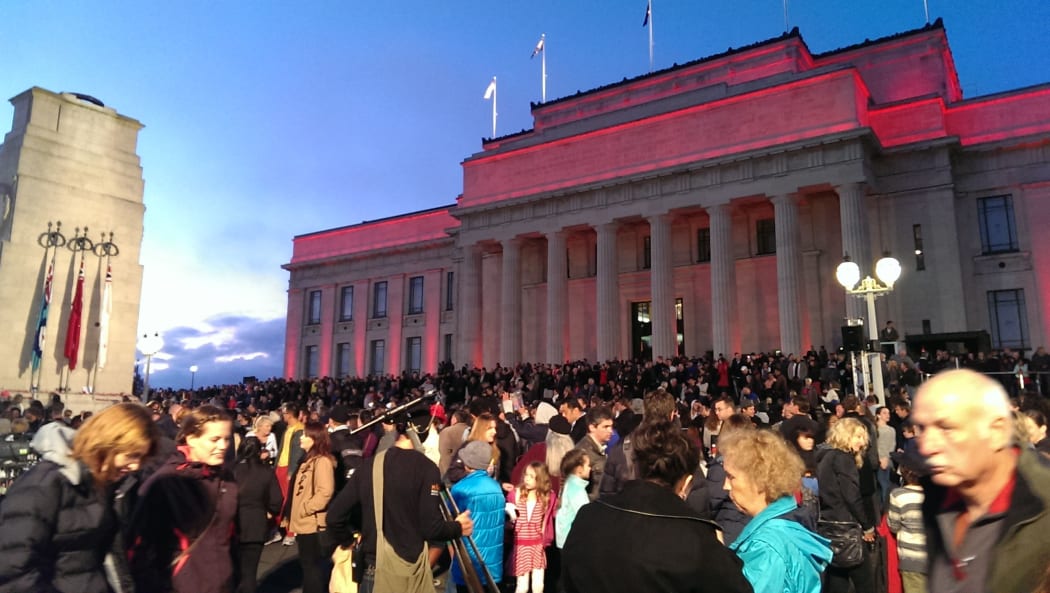
After the Dawn Service in Auckland. Photo: RNZ
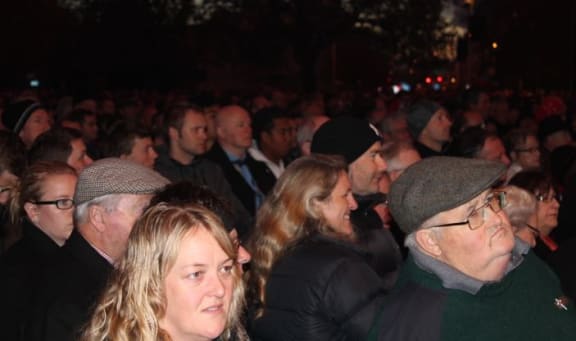
Some of the crowd in Christchurch. Photo: RNZ / Conan Young
Anzac Day always 'a tough one'
In Christchurch, an estimated 8000 people turned out in Cranmer Square. It's the third time Anzac Day commemorations have been held there since the damaging earthquakes in 2011 made it impossible to gather in Cathedral Square.
Among the crowd was Gavin Taylor, who served in World War II, and said Anzac Day is always a tough one. Now in his 90s, Mr Taylor said most of his friends have passed away, but it was good to see so many children at the service.
Also present was Gareth Shaw, who served in the Air Force. He wore medals from both his grandfathers, including one from the South African War in the early 20th century. He also wore a medal from his wife's uncle who was a machine gunner at Gallipoli.

The Cenotaph in Dunedin. Photo: RNZ / Ian Telfer
Mr Shaw said the medals were not seen as that important by his grandfathers, who placed a greater value on the friendships they established while serving together in wartime.
In Dunedin, an estimated 8000 people gathered at the Cenotaph in Queens Gardens. The service began at 6.30am with the firing of two rounds of a 25-pounder.
Applause for veterans
About 4000 people attended the Dawn Service in Hamilton, where RSA chaplain Lieutenant Colonel Don Oliver said veterans are the guardians of remembrance. As the veterans marched away, the crowd broke into spontaneous applause.
Nelson saw its biggest Dawn Service turnout, with mayor Rachel Reese estimating that about 3500 people attended.
A Richmond schoolgirl spoke of how her great-great uncle Edward, a farm hand who died in World War I aged 25, may have been one of the lucky ones because he did not suffer years of distress from injuries after his service, like many others have.
In Whangarei, about 7000 people turned out in calm autumn weather for the early morning service. Attendance has more than doubled in recent years since the venue was changed from the Cenotaph to Laurie Hall Park in the central city.
Also on the increase is the number of white crosses set out in the park, each named for one of Whangarei's war dead in a field of remembrance. The crosses were set out by school children a month ago to serve as a reminder of the toll.
The RSA said new research has found that close to 700 Whangarei people were killed in World War I, not 500 as previously thought. Their names will appear on a new war memorial to be built in the park in time for the centenary of the Gallipoli landings in 2015.
Whangarei RSA president D'Arcy Bailey says the Gallipoli campaign can never be seen as anything but a defeat, but he told the crowd that the soldiers' achievements in the face of impossible odds became the founding strengths of New Zealand and Australia.
Mr Bailey said the purpose of Anzac Day is not to glorify or romanticise war, but to show respect for those who fought and fell.
Children to attend Gallipoli 2015
The New Zealand Government announced on Friday that 100 children and young people will travel to Gallipoli next year to take part in the 100th anniversary commemorations. Most will be descendants of Gallipoli veterans. Veterans Affairs Minister Michael Woodhouse said the special passes were held back from the first round of the ballot and those selected would be advised in early May.
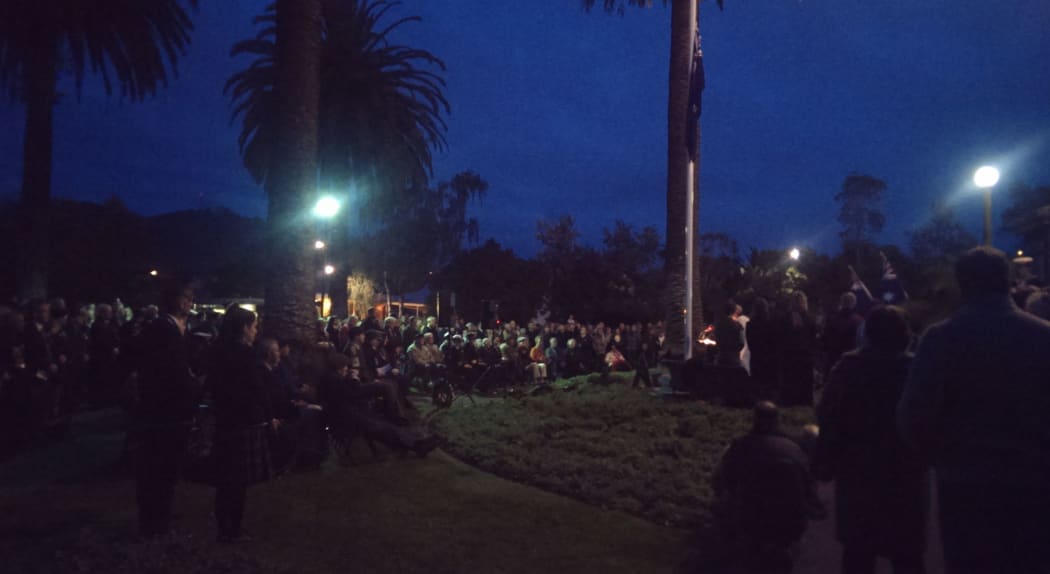
The scene at the service in Nelson. Photo: RNZ / Alison Hossain
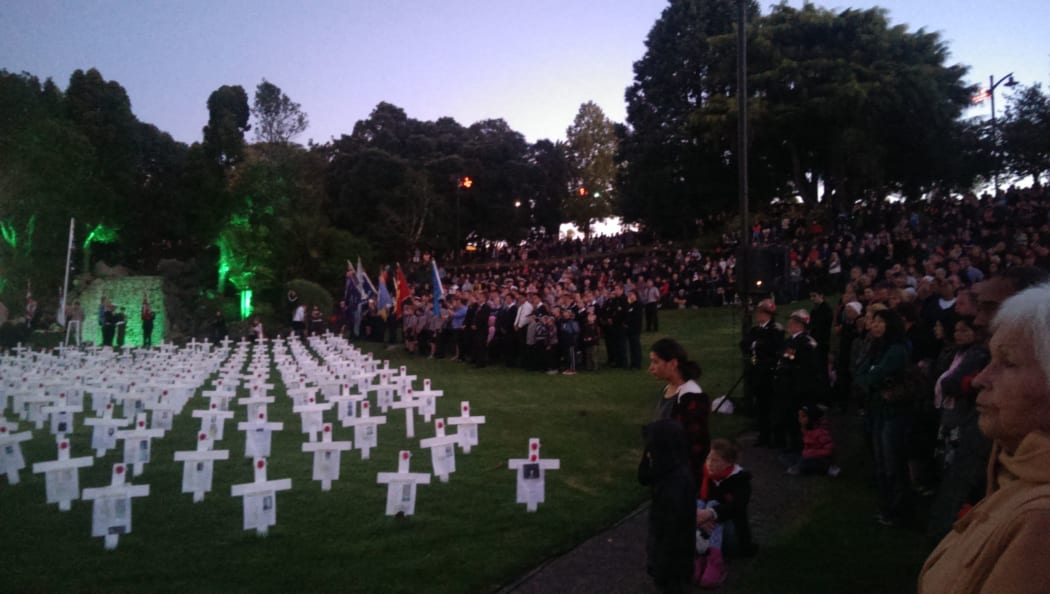
The service in Whangarei at a field of crosses in Laurie Hall Park. Photo: RNZ / Lois Williams

